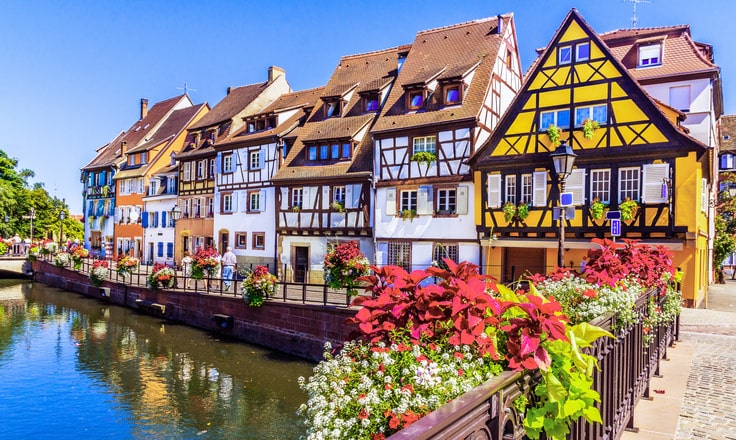6 Tips for Surviving & Thriving with Loyalty Programs in Europe
- Published
- 7 min reading

European consumers have no shortage of loyalty programs to choose from—so how loyal are they really, when switching brands is so easy? With Europeans joining fewer programs than the global average, surviving and standing out requires innovation, meaningful value, and a growing commitment to sustainability—more than just offering points.
Scroll down to find:
- 7 Practical Tips to Strengthen Loyalty Programs in Europe
- Statistics from a Global Loyalty Study
- Insights from 5 Distinct European Markets
1. Make Your Loyalty Program Stand Out
Established markets tend to see lower engagement in loyalty programs, and Europe is no exception. According to our Customer Loyalty Predictions 2025 report, the average European belongs to 9 loyalty programs—fewer than the global average of 10.72. In a competitive and mature market, standing out is a challenge.
To earn a lasting place among those nine memberships, your program must offer genuine value—think exclusive perks, seamless omnichannel experiences, and rewards that go beyond simple discounts.
Integrate green loyalty initiatives like eco-friendly rewards, CO₂-neutral incentives, and partnerships with sustainable brands.
Example: Scandinavian Airlines uses sustainable aviation fuel options in their loyalty programs to offer customers eco-conscious travel choices.
2. Turn Neutral Customers into Loyal Advocates
Building genuine loyalty is even more challenging in Europe. 47% of respondents describe their loyalty as “neutral,” a far cry from the stronger commitment seen globally. To stand out, brands need to focus on emotional engagement.
It’s easy to get caught up in KPIs and benchmarks, but your customers aren’t just data points—they’re people. Meaningful relationships are built on understanding, not just transactions.
Solution: Emotional Engagement Through Green Loyalty
- Instead of purely transactional rewards, offer eco-conscious incentives that align with customers' values.
- Create sustainable donation options (e.g., loyalty points converted into environmental impact initiatives).
- Use storytelling to highlight sustainability efforts and create an emotional connection with members.
The simple fact of understanding that I am the object of commercial practice, knowing the brand seeks to sell me its products, directly kills any attempt to create emotion. And we are not talking about door-to-door selling – even with more subtle commercial methods, I can still sense that someone wants to sell me something, and that immediately puts me off. I’d rather brands try to understand me, talk to me, and exchange opinions with me in a more neutral way.
Jessica Lavigne, CRM and Customer Loyalty Consultant at Comarch
3. Use Dynamic Pricing Strategically
Only 27% of Europeans have a highly positive view of dynamic pricing, compared to 36% globally. However, 38% see it as fair for businesses, recognizing that prices may fluctuate and sometimes lead to higher costs for customers—so there’s potential to build trust.
Transparency is the key here. Clearly explain how your pricing model works and offer loyalty members exclusive price-lock benefits or discounts to create a stronger sense of fairness and value.

4. Improve Personalization Without Overcomplicating It
Personalized offers have a weaker impact on shopping behavior in Europe, with only 46% of consumers responding positively, compared to 56% globally. Additionally, nearly half of Europeans say personalization doesn’t influence their purchases.
However, personalization still matters—it just needs to be thoughtful and relevant rather than overbearing. Instead of excessive customization, focus on subtle yet meaningful tactics, such as relevant product recommendations, personalized messaging that enhance the shopping experience without overwhelming customers, and AI-driven product recommendations for sustainable choices (e.g., "Based on your previous purchases, here’s an eco-friendly alternative").
Loyalty-based sustainability insights: Show customers how their purchases contribute to CO₂ reduction.
Today’s consumers expect tailored experiences that reflect their preferences, habits, and needs, making personalization the cornerstone of any successful loyalty strategy.
For Doppelgänger, this approach has meant rethinking how we engage with our customers, moving beyond transactional rewards to create meaningful and lasting connections across all channels and multiple touchpoints - in-store, online, or in-app.
Federico Dezi, E-Commerce & Digital Innovation Manager at Doppelgänger Roma
5. Make Data Sharing Worthwhile
With only 24% of Europeans willing to share their data for free, brands must offer clear, tangible benefits. Transparency, opt-in personalization, and exclusive perks like early access or customized rewards can help build trust and encourage data sharing.
Many Europeans worry that their data will be sold to third parties or that companies will know too much about them. Address these concerns by clearly communicating your data policies and emphasizing customer control over their information.
6. Highlight Sustainability in a Practical Way
While 59% of European shoppers consider sustainability an important factor, it ranks slightly lower than the global average of 64%. To make sustainable choices more accessible, integrate green product recommendations, carbon offset rewards, or eco-friendly perks into your loyalty program. Offer extra loyalty points for purchasing sustainable products. Partner with green brands to provide exclusive sustainable rewards.
Europeans tend to be more price-sensitive when it comes to sustainable products. Instead of premium pricing, offer sustainability-linked rewards—such as bonus points for eco-friendly purchases or the option to donate points to environmental causes.
Sustainability is, of course, incredibly important, and we all recognize the need to act more sustainably. As a loyalty program, we have the ability to gently nudge people in the right direction.
It’s about showing people they have choices—like buying regular milk or choosing ecological milk, flying traditionally, or using sustainable aviation fuel.
Olivia Wasniewski, Head of the EuroBonus Program at Scandinavian Airlines
Bonus Regional Highlights

UK Loyalty Programs: Prioritize Convenience and Everyday Value
- Focus on grocery and food retail loyalty. With 57% actively participating in supermarket programs, grocery retailers should offer seamless point earning, easy redemptions, and tiered rewards.
- Emphasize convenience. Over 62% of UK consumers stay loyal because of ease of use—make sign-ups, redemptions, and account tracking effortless.
- Offer high-value, frequent rewards. Since UK consumers regularly earn and spend points, short-term rewards (e.g., money-off vouchers or fuel discounts) work better than long-term accumulation.

Loyalty in France: Capitalize on Dining & Quality-Driven Loyalty
- Expand loyalty beyond retail. With restaurant and café memberships nearly double the global average, food and beverage brands should invest in app-based rewards, personalized meal discounts, and exclusive tasting events.
- Quality over price. Since 55% of French consumers prioritize quality, loyalty programs should reward premium purchases with perks like early access to new collections or high-end experiences.
- Encourage multi-category engagement. French consumers hold the most loyalty memberships in Europe (11 programs per person), so cross-brand partnerships and multi-brand coalitions can enhance engagement.

Germany, Austria & Switzerland (DACH): Go Niche & Innovate with Tech
- Develop niche loyalty programs. The DACH region leads in niche categories—DIY stores, cosmetics, and telecom—so brands in these sectors should strengthen their offerings with targeted promotions and tiered memberships.
- Leverage tech enthusiasm. Since Austrians are highly receptive to innovations like geolocation-based offers (39%) and AR shopping (44%), brands should integrate cutting-edge tech for personalized engagement.

Loyalty in Benelux: Strengthen Digital-First Loyalty
- Boost online loyalty incentives. Consumers in Benelux are more likely to earn and spend points while shopping online (25% earn, 23% spend), so e-commerce brands should enhance digital engagement through personalized offers, gamified experiences, and one-click redemptions.
- Encourage participation in The Netherlands. With Dutch consumers engaging in fewer programs (7 per person), brands should focus on increasing perceived value through easy onboarding, compelling welcome offers, and personalized incentives.

Scandinavian Loyalty: Reward Brand Enthusiasm & Travel Loyalty
- Tap into brand affinity. 22% of Scandinavian consumers participate in loyalty programs simply because they enjoy the brand—so brands should cultivate loyalty through emotional engagement and unique behind-the-scenes experiences.
- Optimize for travel and airline loyalty. Scandinavians, especially Swedes, actively collect and spend points on air travel (15% earn, 10% spend). Airlines, travel platforms, and related services should enhance their loyalty programs with exclusive airport perks, lounge access, and flexible redemption options.
- Highlight transparent value. Only 2% of Scandinavian consumers are skeptical about rewards—so brands should ensure transparency in how points and benefits are structured to maintain consumer trust.
Bottom Line: Real Connections Matter
Key Takeaways:
- Transactional loyalty is fading—value-based loyalty wins.
- Green Loyalty is the differentiator in saturated European markets.
Standing out in a competitive and mature market like Europe isn’t easy. Customers have countless options, and loyalty can no longer be won by simply offering points or discounts. To survive and thrive, brands must build genuine, lasting relationships through personalization, transparency, and meaningful value.
Understand what truly matters to your customers on a human level, and by adapting your loyalty program to meet their expectations, you can turn engagement into long-term loyalty—even in the most saturated industries. Focus on building real connections, and your program will not only survive—it will stand out.
For more market data and experts’ insights, be sure to check out our global Customer Loyalty Predictions 2025 report today!



